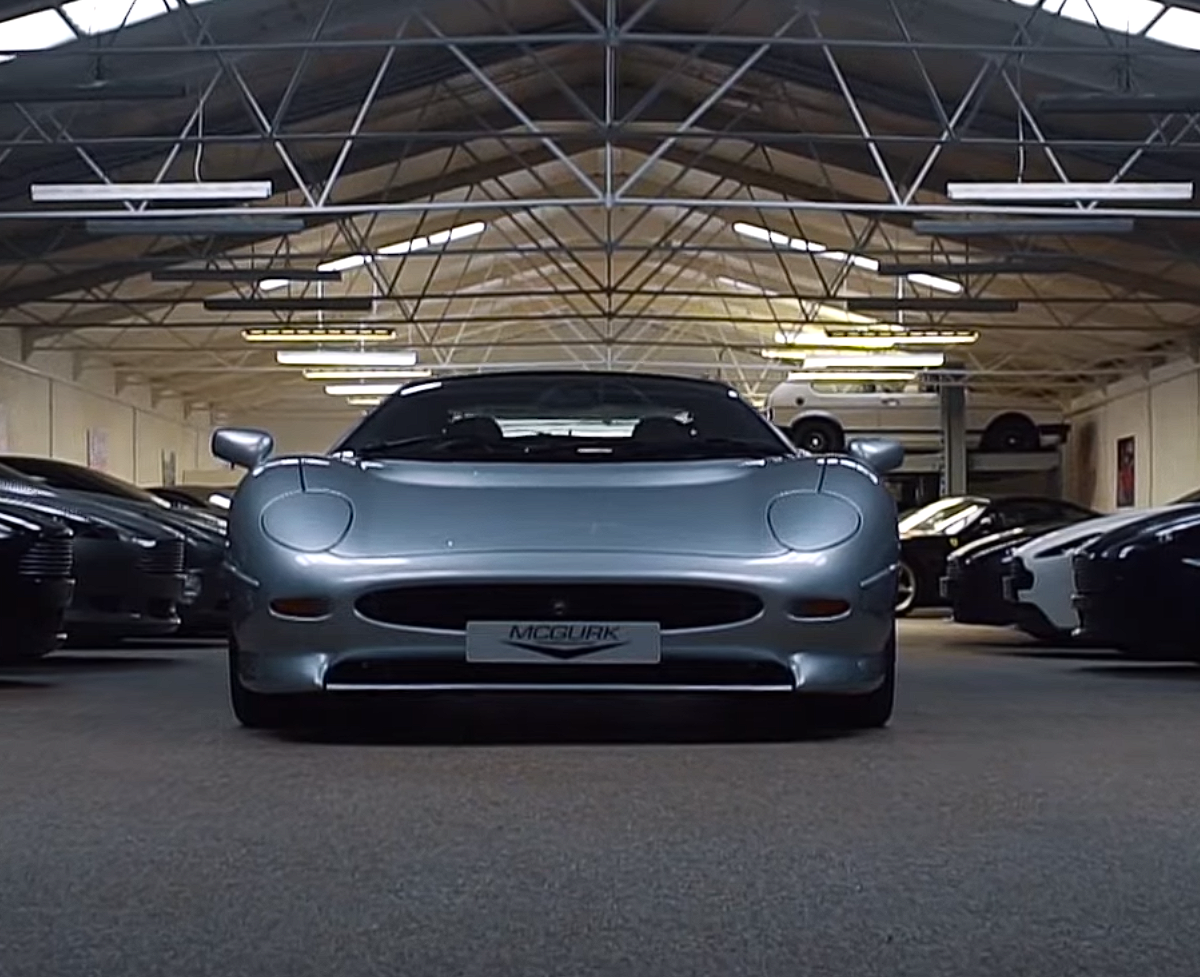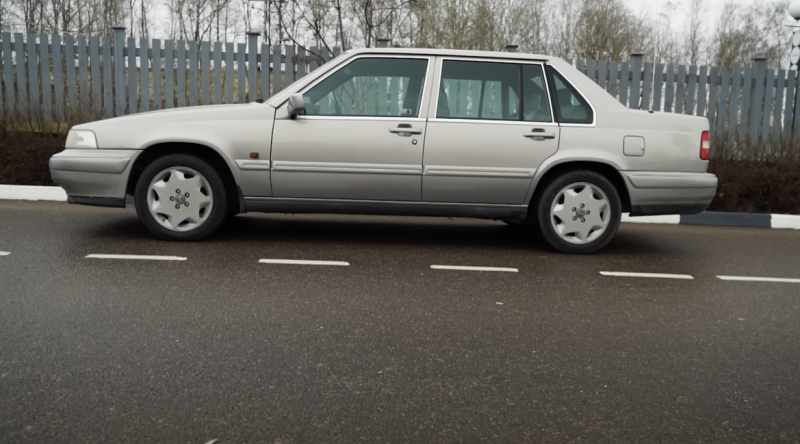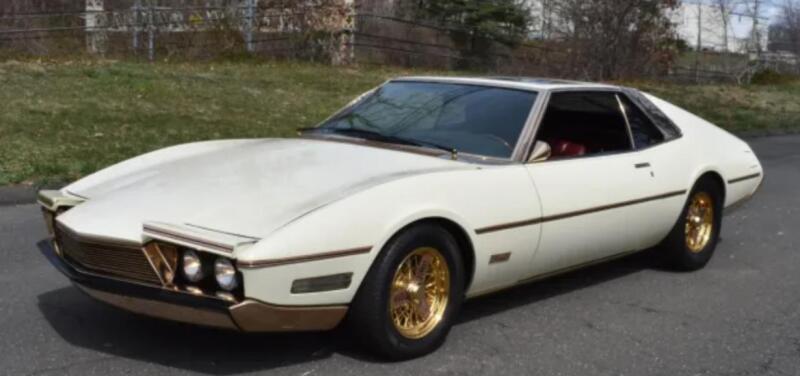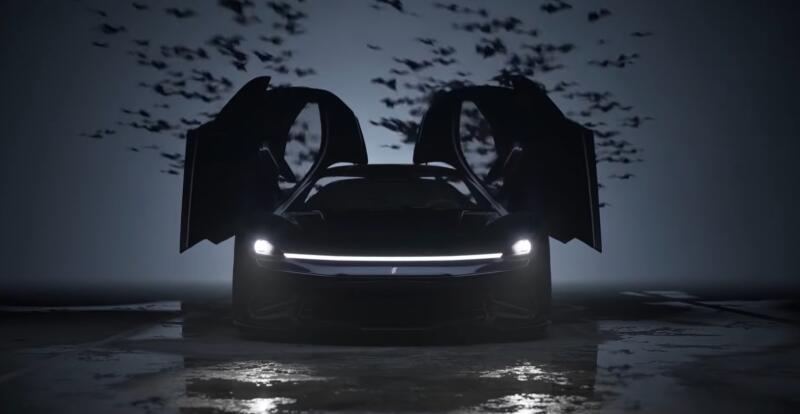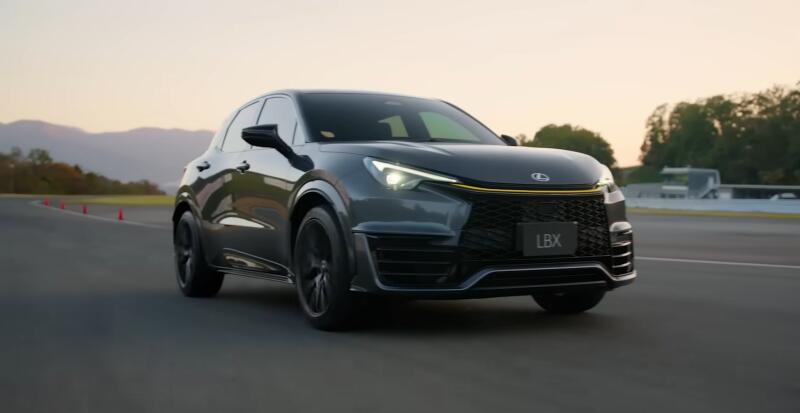In the mid-eighties, Jaguar had a hugely successful motorsport program in the Group C sports prototype category, where the British successfully competed against Porsche, Sauber-Mercedes and Nissan. But Jim Randle, technical director of Jaguar, believed that the company needed to create something simpler, in the style of the Porsche 959 and Ferrari 288GTO - that is, a Group B car! At the end of 1987, Jim drew a couple of sketches of such a car. So the XJ123 project was born, later renamed the XJ220. The index was not chosen by chance, because the developers were counting on such a maximum speed of 220 miles per hour.
 Jaguar XJ220. Photo: Youtube.com
Jaguar XJ220. Photo: Youtube.comBut the company's financial situation did not allow the project to be implemented "in kind", so Jim Randle asked a group of engineers and designers to work on the XJ220 project in his spare time, later this group would be called the "Saturday Club". Eventually, Jaguar found out about the car and helped the engineers complete the first prototype.
When the XJ220 was unveiled at the Birmingham Motor Show, Jaguar representatives insisted that it was "just a concept car" and that there were no plans for a road car. But the concept car was received with such enthusiasm that Jaguar nevertheless decided to create a serial modification of the car. True, they made a couple of reservations:
✅ Potential customers announced that the price of the supercar will be 250 pounds
✅ XJ220 will be produced in a run of 220 pieces, with the possibility of increasing production to 350 pieces
The last offer also had one small caveat - if there was sufficient demand.
 The rear lights for the XJ220 were borrowed from the Rover 200. Photo: Youtube.com
The rear lights for the XJ220 were borrowed from the Rover 200. Photo: Youtube.comFurther development and assembly of the first working prototypes of the XJ220 was entrusted to Jaguar Sport, a joint venture between Jaguar Cars and Tom Walkinshaw Racing (TWR), which ran the brand's racing program at the WSC and IMSA.
Technical information
Although the XJ220 concept car was equipped with a six-liter V12 engine, for road specification, the Jaguar Sport uses a racing V6 with a displacement of 3,5 liters. The rejection of the V12 was a fatal mistake: hypothetical customers did not take the supercar with a V6 engine seriously. Jaguar explained the replacement by saying that the V12 was too bulky, gluttonous and not environmentally friendly, and the smaller displacement of the V6 is fully offset by the use of twin Garrett T3 turbochargers.
 Jaguar JRV-6 90º V6 is too small for such an impressive engine compartment! Photo: Youtube.com
Jaguar JRV-6 90º V6 is too small for such an impressive engine compartment! Photo: Youtube.comIndeed, the performance of the engine speaks for itself: 542 horses at 6500 rpm and 473 Nm of torque at 5000 rpm, instead of "only" 500 hp. With. at V12. It would seem that everything is obvious. But there was also a more prosaic reason for this controversial change.
Shortly before the events described, FISA banned rally group B, which means that all participating cars were left out of work. Including MG Metro 6R4, equipped with a V6 biturbo engine. So, the rights to intellectual property and equipment for the production of this motor were bought by Tom Walkinshaw - the owner of TWR! After that, the British used the same unit on the Jaguar XJR-10 and XJR-11 prototypes to fight the Nissan ZX-GTP in the IMSA championship and Sauber-Mercedes in the WSC.
 The engine for the XJ220 was borrowed from the MG Metro 6R4. Photo: Youtube.com
The engine for the XJ220 was borrowed from the MG Metro 6R4. Photo: Youtube.comThe body of the serial XJ220 was made of aluminum, and there were no discrepancies with the prototype. Curb weight also remained at a low 3025 pounds, partly due to the lighter engine.
Performance
In 1991, the Jaguar XJ220 was taken to the Fort Stockton Test Center in Houston, Texas to test Bridgestone tyres. It was there, driven by Le Mans 24 winner Andy Wallace, that the XJ220 reached its top speed of 340 kilometers per hour for the first time. This made it the fastest production car on planet Earth. Later, the Jaguar XJ220 updated the world record by accelerating to a speed of 342 km / h at the Nardo test track in Italy, and after the removal of catalytic converters, it reached 349,22 km / h. This record stood until Gordon Murray's McLaren F1 hit 240 mph.
 Andy Wallace, the 1988 Le Mans winner, was one of the people who taught the XJ220 how to ride. Photo: Youtube.com
Andy Wallace, the 1988 Le Mans winner, was one of the people who taught the XJ220 how to ride. Photo: Youtube.comAcceleration times to speeds of 100 and 160 km / h were 3,6 and 8 seconds, respectively, and the car drove a quarter mile in just under 12 seconds. The Jaguar XJ220 "Prototype 005" also set the Nordschleife lap record of 7 minutes 46 seconds (which held until 2000).
Reasons for commercial failure
After the Birmingham show, Jaguar received 1500 pre-orders for the XJ220. Subsequently, all of them, with the exception of 350, were canceled. During pre-production, the price of the car rose to £290, causing a significant number of customers to abandon the XJ000.
 The interior of the Jaguar XJ220 is without exaggeration luxurious! Photo: Youtube.com
The interior of the Jaguar XJ220 is without exaggeration luxurious! Photo: Youtube.comIn addition to the increased price, as the reason for the refusal to redeem the pre-order, they called the specification of the Jaguar XJ220 changed compared to the show car: the absence of an exotic V12, an all-wheel drive chassis and all-wheel drive. Some customers even sued Jaguar, demanding the return of the advance payment, but lost.
24 Hours of Le Mans
For the 1993 marathon, TWR Jaguar Racing produced three examples of the XJ220 Competition:
✅ John Nielsen, David Brabham, David Coulthard. Machine number 50
✅ Vin Percy, Armin Hahn, David Leslie. Machine number 51
✅ Paul Belmondo, Jay Cochran, Andreas Fuchs. Machine number 52
The Jaguar XJ220 proved to be fast out of the box and in qualifying, TWR Jaguar Racing placed themselves behind the GT class-leading Porsche 964 Turbo S LM, with Walter Röhrl, Hans-Joachim Stuck and Hurley Heywood at the wheel.
 Racing Jaguar XJ220C. Photo: Youtube.com
Racing Jaguar XJ220C. Photo: Youtube.comHowever, during a technical inspection, ACO Chief Judge Alain Berteau noticed that the racing XJ220C, unlike the road cars, did not have catalytic converters installed. Considering this as a violation of the regulations, Alain removed TWR Jaguar Racing from the race. After a heated debate, and the intervention of IMSA chief Amos Johnson, Berto accepted Walkinshaw's appeal and allowed TWR Jaguar Racing to race. After the start of the marathon, the GT class was led by Stuck in a Porsche. But in the second hour of the race, the throttle stuck in his car. Having lost five laps on repairs, in an attempt to recoup Porsche was defeated by Walter Röhrl. TWR also had problems: six laps after the start, the team lost the first car - at No. 51, the cylinder head gasket burned out.
 Jaguar XJ220S is the road version of the racing car. Photo: Youtube.com
Jaguar XJ220S is the road version of the racing car. Photo: Youtube.comBut after problems with Röhrl and Stuck, the two remaining XJ220s managed to establish themselves at the top of the GT class. Things were going to a confident double victory, but at night David Brabham suddenly smelled a strong smell of gasoline. The Australian drove into the pits, where the mechanics discovered that the fuel tank had burst. David was asked to drive one more lap while the team prepared for repairs, but in response, David sent the team to a known address, stating that he was not going to go "in a bath of gasoline." The delay cost the car the class lead, which went to crew 52. However, Andreas Fuchs suffered a blown tire, and after a 360-degree turn on the Mulsan straight, his XJ220 slowly hobbled into the pits. The damage was minor, but the engine began to overheat and the crew of #52 had to disembark. The Jaguar XJ220C of Nielsen, Brabham and Coulthard finished first, two laps ahead of the closest competitor in the class, the Porsche Carrera RSR 3,8.
However, after the race, the ACO ruled that because TWR's appeal was delayed to the French Sports Federation (FFSA), it was rejected and the Jaguar XJ220C's GT victory was declared invalid: the car and crew were disqualified. In this way Porsche managed to take another victory in the GT class at Le Mans.
 Instead of the XJ220, Bloxham started producing the Aston Martin DB1994 in 7. Photo: Youtube.com
Instead of the XJ220, Bloxham started producing the Aston Martin DB1994 in 7. Photo: Youtube.com Unfortunately, the Jaguar XJ220 will forever be remembered as a failed supercar. This happened mainly because it entered production at the most inopportune time - at the time of the economic downturn and the loss of interest in collectible cars. The XJ220, even with a modest V6, was not a “blind kitten”, rather, TWR management, pursuing momentary goals, and the marketing department of the Coventry firm were. But despite all the negativity, the Jaguar XJ220 deserves to be in the automobile pantheon of the greatest cars of the nineties, along with the Ferrari F40, Bugatti EB110, and McLaren F1.
